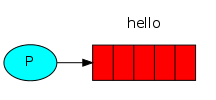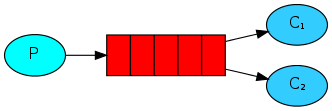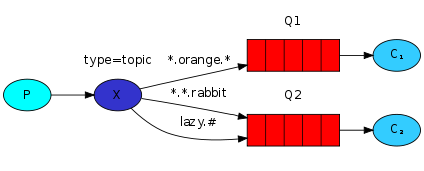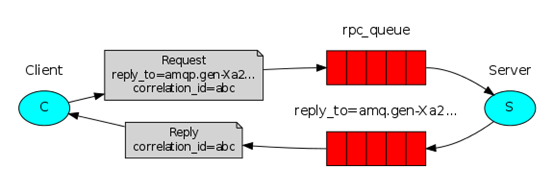一、安装
rabbitMq是erlang语言开发的,所以安装rabbitmq之前必须安装erlang。
https://www.rabbitmq.com/which-erlang.html,选择想要下载的rabbitmq版本和与之对应的erlang版本。

我下载的3.8.1版本的rabbitmq,erlang版本是22.1
Erlang安装:
1、下载。进入http://erlang.org/download/,如下图下载。

2、安装:右键已管理员身份运行。
3、配置环境变量

并在path中配置%ERLANG_HOME%\bin
rabbitmq安装:
1、下载:点击rabbitMQ version,进入如下图下载:

2、安装:右键以管理员身份运行。
启用控制台插件
1、执行命令。以管理员身份打开dos命令窗口,进入C:\Program Files\RabbitMQ Server\rabbitmq_server-3.8.1\sbin,执行命令:rabbitmq-plugins.bat enable rabbitmq_management。

2、验证。http://localhost:15672, 默认的用户名/密码:guest/guest


二、入门程序hello test-单个生产者消费者
RabbitMQ是一个消息代理:它接受和转发消息。你可以把它想象成一个邮局:当你把你想要投寄的邮件放进邮箱时,你可以确定邮差先生或女士最终会把邮件送到你的收件人那里。在这个类比中,RabbitMQ是一个邮筒,一个邮局和一个邮递员。
RabbitMQ和邮局之间的主要区别是它不处理纸张,而是接受、存储和转发二进制的数据消息块。
生产者要发送消息:

生产者将要发送的消息发送到队列,消费者监听队列,队列代表着一个消息缓存区:

消费者等待接收消息:

生产者、消费者可以不在同一台机器上,但是一个服务器既可以是生产者也可以是消费者。

Sending

大致步骤:
(1) 创建连接工厂
(2) 创建连接
(3) 创建通道
(4) 声明队列
(5) 消息发布
代码实现:
import java.io.IOException;
import java.util.concurrent.TimeoutException;
import com.rabbitmq.client.Channel;
import com.rabbitmq.client.Connection;
import com.rabbitmq.client.ConnectionFactory;
/**
* @ClassName: Producer01
* @Description:生产者
* @author:
* @date:
* @Copyright:
*/
public class Producer01 {
private static final String QUEUE = "producer001";
public static void main(String[] args) throws IOException, TimeoutException {
Connection newConnection = null;
Channel channel = null;
try {
//连接工厂
ConnectionFactory connectionFactory = new ConnectionFactory();
connectionFactory.setHost("localhost");
connectionFactory.setPort(5672);
connectionFactory.setUsername("guest");
connectionFactory.setPassword("guest");
connectionFactory.setVirtualHost("/");//rabbitmq默认虚拟机名称是/,虚拟机相当于一个独立的mq的服务。
newConnection = connectionFactory.newConnection();//创建与rabbitmq服务的TCP连接
channel = newConnection.createChannel();//创建与exchange的通道,每个连接可以创建多个通道,每个通道代表一个会话任务
/**
* 声明队列,如果rabbit没有此队列则自动创建。
* queue:队列名称
* durable:是否持久化
* exclusive:队列是否独占此连接
* autoDelete:队列不再使用时是否自动删除此队列
* arguments:队列参数
*/
channel.queueDeclare(QUEUE,true,false,false,null);
String message = "hello test 第一次"+System.currentTimeMillis();
/**
* 消息发布方法
* exchange
* routingKey
* props
* body
*/
channel.basicPublish("", QUEUE, null, message.getBytes());
}catch (Exception e) {
e.printStackTrace();
}finally {
if(channel != null) {
channel.close();
}
if(newConnection != null) {
newConnection.close();
}
}
}
}
Receiving

(1) 创建连接工厂
(2) 创建连接
(3) 创建通道
(4) 声明队列
(5) 监听并执行消息
代码实现:
import java.io.IOException;
import java.util.concurrent.TimeoutException;
import com.rabbitmq.client.AMQP;
import com.rabbitmq.client.Channel;
import com.rabbitmq.client.Connection;
import com.rabbitmq.client.ConnectionFactory;
import com.rabbitmq.client.DefaultConsumer;
import com.rabbitmq.client.Envelope;
/**
* @ClassName: Consumer01
* @Description: 消费者
* @author:
* @date:
* @Copyright:
*/
public class Consumer01 {
private static final String QUEUE = "producer001";
/**
* @Title: main
* @Description:
* @param args
* @throws TimeoutException
* @throws IOException
*/
public static void main(String[] args) throws IOException, TimeoutException {
Connection newConnection = null;
Channel channel = null;
ConnectionFactory connectionFactory = new ConnectionFactory();
connectionFactory.setHost("localhost");
connectionFactory.setPort(5672);
newConnection = connectionFactory.newConnection();//
channel = newConnection.createChannel();//
/**
* 声明队列
* queue:
* durable:
* exclusive:
* autoDelete:
* arguments:
*/
channel.queueDeclare(QUEUE,true,false,false,null);
//定义消费方法
DefaultConsumer consumer = new DefaultConsumer(channel) {
@Override
public void handleDelivery(String consumerTag,
Envelope envelope,
AMQP.BasicProperties properties,
byte[] body)
throws IOException {
String exchange = envelope.getExchange();//
String routingKey = envelope.getRoutingKey();//
long deliveryTag = envelope.getDeliveryTag();//
String msg = new String(body,"utf-8");
System.out.println("receive message.."+msg);
}
};
/**
*
* exchange
* routingKey
* props
* body
*/
channel.basicConsume(QUEUE, true,consumer);
}
}
三、工作模式
1、 work queue

这种工作模式和入门程序一样,只是它有多个消费者,并且多个消费者轮询接收消息。
其他的工作模式大致步骤:
生产者:
(1) 创建连接工厂
(2) 创建连接
(3) 声明通道
(4) 声明交换机
(5) 声明队列
(6) 队列绑定交换机(生产者中指定routingkey的地方无需绑定)
(7) 发送消息
消费者:
(1) 创建连接工厂
(2) 创建连接
(3) 声明通道
(4) 声明交换机
(5) 声明队列
(6) 队列绑定交换机
(7) 监听并处理消息
2、 publish/subscribe(交换机类型-fanout)

这种模式下较work queue模式增加了交换机,区别是每一个消费者都会收到生产者的消息。
生产者:
(1)这种模式下的交换类型是fanout,声明交换机处指定:
channel.exchangeDeclare(EXCHANGE_FANOUT_INFORM, BuiltinExchangeType.FANOUT);
(2)多个通道,需声明多个通道:
/**
* 声明队列,如果rabbit没有此队列则自动创建。
* queue:队列名称
* durable:是否持久化
* exclusive:队列是否独占此连接
* autoDelete:队列不再使用时是否自动删除此队列
* arguments:队列参数
*/
channel.queueDeclare(QUEUE_INFORM_EMAIL,true,false,false,null);
channel.queueDeclare(QUEUE_INFORM_SMS,true,false,false,null);
(3)多个队列绑定交换机
/**
* 交换机与队列绑定
* queue 队列名称
* exchange 交换机名称
* routingKey 路由key
*/
channel.queueBind(QUEUE_INFORM_EMAIL, EXCHANGE_FANOUT_INFORM, "");
channel.queueBind(QUEUE_INFORM_SMS, EXCHANGE_FANOUT_INFORM, "");
消费者(创建多个消费者):
声明交换机:
channel.exchangeDeclare(EXCHANGE_FANOUT_INFORM, BuiltinExchangeType.FANOUT);
队列绑定交换机:
channel.queueBind(QUEUE_INFORM_EMAIL, EXCHANGE_FANOUT_INFORM, "");
多个消费者定义多个。。。
3、 routing(交换机类型-direct)

它同publish/ subscribe不同在于,它可以指定routingkey,每个通道可以绑定多个routingkey,根据routingkey来接收生产者的消息,只有生产者和消费者声明的routingkey一致才能收到消息。
生产者:
(1)这种模式下,交换机声明类型是direct
/**
* 声明交换机
* exchange
* BuiltinExchangeType type:
*/
channel.exchangeDeclare(EXCHANGE_DIRECT_INFORM, BuiltinExchangeType.DIRECT);
(2)发送消息指定routingkey
/**
* 向交换机发送消息
* exchange
* routingKey
* props
* body
*/
channel.basicPublish(EXCHANGE_DIRECT_INFORM, QUEUE_INFORM_EMAIL, null, message.getBytes());
消费者(多个消费者声明多个消费者类):
声明交换机、队列和交换机绑定同生产者。
这种模式下可以实现publish/subscribe模式,即将所有的通道上都指定相同的routingkey。
4、 topic(交换机类型-topic)

Topic模式是通过通配符匹配,*代表一个单词,#代表零个或多个单词,.表示分隔符。Routingkey最多255个字节。
生产者:
声明交换机的模式是topic:
/**
* 声明交换机
* exchange
* BuiltinExchangeType type:
*/
channel.exchangeDeclare(EXCHANGE_TOPIC_INFORM, BuiltinExchangeType.TOPIC);
/**
* 向交换机发送消息
* exchange
* routingKey
* props
* body
*/
channel.basicPublish(EXCHANGE_TOPIC_INFORM, "inform.sms", null, message.getBytes());
channel.basicPublish(EXCHANGE_TOPIC_INFORM, "inform.email", null, message.getBytes());
channel.basicPublish(EXCHANGE_TOPIC_INFORM, "inform.sms.email",null, message.getBytes());
消费者:
交换机与队列绑定
channel.queueBind(QUEUE_INFORM_EMAIL, EXCHANGE_TOPIC_INFORM, "inform.#.email.#");
这种模式下可以通过routing模式实现。
5、 headers(交换机类型-headers)
这种模式下是通过队列和map键值对来匹配的。无需指定routingkey
生产者:
/**
* 声明交换机
* exchange
* BuiltinExchangeType type:
*/
channel.exchangeDeclare(EXCHANGE_HEADERS_INFORM, BuiltinExchangeType.HEADERS);
/**
* 交换机与队列绑定
* queue
* exchange
* routingKey
* Map<String, Object> arguments
*/
Map<String,Object> headers_email = new Hashtable<>();
headers_email.put("inform_type", "email");
Map<String,Object> headers_sms = new Hashtable<>();
headers_sms.put("inform_type", "sms");
channel.queueBind(QUEUE_INFORM_EMAIL, EXCHANGE_HEADERS_INFORM, "",headers_email);
channel.queueBind(QUEUE_INFORM_SMS, EXCHANGE_HEADERS_INFORM, "", headers_sms);
/**
* 向交换机发送消息
* exchange
* routingKey
* AMQP.BasicProperties props
* body
*/
Map<String,Object> headers = new Hashtable<>();
headers.put("inform_type", "email");
AMQP.BasicProperties.Builder props = new AMQP.BasicProperties.Builder();
props.headers(headers);
channel.basicPublish(EXCHANGE_HEADERS_INFORM, "", props.build(), message.getBytes());
消费者:
队列和交换机绑定:
Map<String,Object> headers_email = new Hashtable<>();
headers_email.put("inform_type", "email");
channel.queueBind(QUEUE_INFORM_EMAIL, EXCHANGE_TOPIC_INFORM, "",headers_email);
6、RPC

如果需要远程调用一个方法并等待返回结果,这种模式成为远程过程调用模式。这种模式下服务端即是生产者又是消费者。适用于需要返回结果的异步请求。
四、Springboot+rabbitmq
一、环境创建
生产者和消费者的项目pom引入依赖:
<dependency>
<groupId>org.springframework.boot</groupId>
<artifactId>spring-boot-starter-amqp</artifactId>
</dependency>
<dependency>
<groupId>org.springframework.boot</groupId>
<artifactId>spring-boot-starter-test</artifactId>
</dependency>
application.yml中:
server:
port: 41007
spring:
application:
name: test-rabbitmq-consumer
rabbitmq:
host: 127.0.0.1
port: 5672
username: guest
password: guest
virtualHost: /
应用启动类:
@SpringBootApplication
public class RabbitmqApp {
public static void main(String[] args) {
SpringApplication.run(RabbitmqApp.class, args);
}
}
二、生产、消费配置类
/**
* All rights Reserved, Designed By www.tydic.com
* @Title: RabbitmqConfig.java
* @Package com.songder.rabbitmq.config
* @Description: 描述
* @author: Ys
* @date: 2019年11月27日 上午9:18:07
* @version V1.0
* @Copyright:
*/
package com.songder.rabbitmq.config;
import org.springframework.amqp.core.Binding;
import org.springframework.amqp.core.BindingBuilder;
import org.springframework.amqp.core.Exchange;
import org.springframework.amqp.core.ExchangeBuilder;
import org.springframework.amqp.core.Queue;
import org.springframework.beans.factory.annotation.Qualifier;
import org.springframework.context.annotation.Bean;
import org.springframework.context.annotation.Configuration;
/**
* @ClassName: RabbitmqConfig
* @Description: rabbitmq消费者配置类
* @author: Ys
* @date: 2019年11月27日 上午9:18:07
* @Copyright:
*/
@Configuration
public class RabbitmqConfig {
public static final String QUEUE_INFORM_EMAIL = "queue_inform_email";
public static final String QUEUE_INFORM_SMS = "queue_inform_sms";
public static final String EXCHANGE_TOPIC_SPRINGBOOT_INFORM = "exchange_topic_springboot_inform";
public static final String ROUTING_EMAIL ="inform.#.email.#";
public static final String ROUTING_SMS ="inform.#.sms.#";
/**
*
* @Title: EXCHANGE_TOPIC_SPRINGBOOT_INFORM
* @Description: 定义交换机
* @return
* @author Ys
* @date 2019-11-27 09:31:40
*/
@Bean(EXCHANGE_TOPIC_SPRINGBOOT_INFORM)
public Exchange EXCHANGE_TOPIC_SPRINGBOOT_INFORM() {
//durable(true)持久化,mq启动后交换机持久化
return ExchangeBuilder.topicExchange(EXCHANGE_TOPIC_SPRINGBOOT_INFORM).durable(true).build();
}
/**
*
* @Title: QUEUE_INFORM_EMAIL
* @Description: 声明队列1
* @return
* @author Ys
* @date 2019-11-27 09:34:57
*/
@Bean(QUEUE_INFORM_EMAIL)
public Queue QUEUE_INFORM_EMAIL() {
Queue queue = new Queue(QUEUE_INFORM_EMAIL);
return queue;
}
/**
*
* @Title: QUEUE_INFORM_SMS
* @Description: 声明队列2
* @return
* @author Ys
* @date 2019-11-27 09:35:23
*/
@Bean(QUEUE_INFORM_SMS)
public Queue QUEUE_INFORM_SMS() {
Queue queue = new Queue(QUEUE_INFORM_SMS);
return queue;
}
/**
*
* @Title: BIND_QUEUE_INFORM_EMAIL
* @Description: email绑定交换机
* @param queue
* @param exchange
* @return
* @author Ys
* @date 2019-11-27 09:45:34
*/
@Bean
public Binding BINDING_ROUTING_EMAIL(@Qualifier(QUEUE_INFORM_EMAIL)Queue queue,
@Qualifier(EXCHANGE_TOPIC_SPRINGBOOT_INFORM)Exchange exchange) {
return BindingBuilder.bind(queue).to(exchange).with(ROUTING_EMAIL).noargs();
}
/**
*
* @Title: BIND_QUEUE_INFORM_EMAIL
* @Description:sms绑定交换机
* @param queue
* @param exchange
* @return
* @author Ys
* @date 2019-11-27 09:45:34
*/
@Bean
public Binding BINDING_ROUTING_SMS(@Qualifier(QUEUE_INFORM_SMS)Queue queue,
@Qualifier(EXCHANGE_TOPIC_SPRINGBOOT_INFORM)Exchange exchange) {
return BindingBuilder.bind(queue).to(exchange).with(ROUTING_SMS).noargs();
}
}
三、生产测试类
import org.junit.Test;
import org.junit.runner.RunWith;
import org.slf4j.Logger;
import org.slf4j.LoggerFactory;
import org.springframework.amqp.rabbit.core.RabbitTemplate;
import org.springframework.beans.factory.annotation.Autowired;
import org.springframework.boot.test.context.SpringBootTest;
import org.springframework.test.context.junit4.SpringRunner;
import com.songder.rabbitmq.config.RabbitmqConfig;
/**
* @ClassName: Producer05_topic_springboot
* @Description:
* @author: Ys
* @date: 2019年11月27日 上午10:01:52
* @Copyright:
*/
@SpringBootTest
@RunWith(SpringRunner.class)
public class Producer05_topic_springboot {
@Autowired
RabbitTemplate rabbitTemplate;
Logger logger = LoggerFactory.getLogger(Producer05_topic_springboot.class);
@Test
public void testSendByTopic() {
for(int i=0;i<5;i++) {
String message = "inform to user"+i;
rabbitTemplate.convertAndSend(RabbitmqConfig.EXCHANGE_TOPIC_SPRINGBOOT_INFORM,"inform.sms.email", message);
logger.info(message+i);
}
}
}
四、消费监听类
import org.springframework.amqp.core.Message;
import org.springframework.amqp.rabbit.annotation.RabbitListener;
import org.springframework.stereotype.Component;
import com.rabbitmq.client.Channel;
import com.songder.rabbitmq.config.RabbitmqConfig;
/**
* @ClassName: ReceiveHandler
* @Description: 消费
* @author: Ys
* @date: 2019年11月27日 上午10:39:14
* @Copyright:
*/
@Component
public class ReceiveHandler {
@RabbitListener(queues= {RabbitmqConfig.QUEUE_INFORM_EMAIL})
public void receiveEmail(String message) {
System.out.println(message);
}
@RabbitListener(queues= {RabbitmqConfig.QUEUE_INFORM_SMS})
public void receiveSms(String message,Message msg,Channel channel) {
System.out.println(message);
}
}






















 3562
3562











 被折叠的 条评论
为什么被折叠?
被折叠的 条评论
为什么被折叠?








